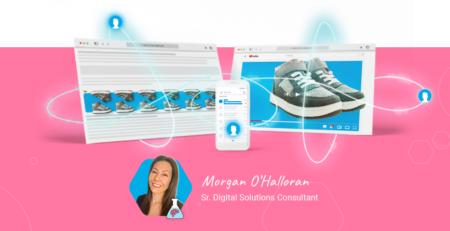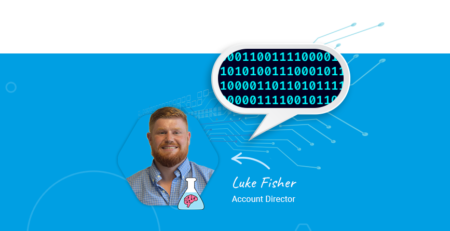When to and when NOT to do programmatic advertising
Programmatic is the future of advertising, particularly in display advertising. As marketers, we always seem to be chasing the next big tactic, competitive edge and a way to influence customers at a cheaper cost. Programmatic advertising is evolving to be the most effective way to tick all these boxes on the marketer’s wise list. By utilizing programmatic, advertisers can easily scale, consolidate and optimize how they target, influence and convert potential customers and clients. While display and video have been the primary mediums utilizing the programmatic process, it is slowly expanding to the realms of the media landscape:
- Audio: Spotify, Pandora, Internet Radio
- TV: Multiple cable networks are automating and providing access to their inventory via Supply Side Platforms or Demand Side Platforms
- Billboards: ClearChannel have been working on a nationwide network of Programmatic billboards being able to be bought in real time
- Direct Mail: Companies like PebblePost are allowing advertisers to remarket to customers via mail based on their activities online
While we here at Hanapin are advocates for the advancement of advertising technology and the continued performance of campaigns, we realize that programmatic does not work for everybody, 100% of the time. This whitepaper will discuss the whens and when NOTs to use programmatic.
The When Nots:
You don’t have a significant budget
Despite the advancements of programmatic, and the removal of the high barriers to entry, programmatic takes an investment of enough budget and time to gain insights, testing and optimizations to find optimum audiences, creative messaging and strategies. This is particularly more important if you are allowing your programmatic vendor’s algorithmic technology to drive performance. Machine learning is becoming a much bigger part of the programmatic realm and like anything, it needs the patience to be allowed to gather data and learn the right path to reach the correct audience.
You don’t value view-through conversions
View through conversions are a contentious issue amongst marketers. Do they count, do they not, can we give some credit to them? In reality, significant amount of conversions from display campaigns come in the form of view through conversions. If you are unable to report against these, either 100% or in some form of modified attribution, you will struggle to show direct benefits of programmatic. Programmatic provides advertisers access to highly targeted data sets to hone in on their desired customers in less time and create a full funnel strategy allowing advertisers to provide 1:1 messaging to users at the right time in their buying cycle. Each line item will not convert immediately, or at all, but will help fill the funnel with a higher quality visitor which, in turn, should convert at a higher rate at the bottom of the funnel.
You have not experimented with Display before
Programmatic is great, but insights are needed to help you shape your strategy and initial test, whether that be broader audiences, creative, geos etc. Using GDN is a good solution for initial budget tests as you enter into Display and will provide you with a lot of solid data to base your future efforts on.
Programmatic is not a magic answer to all your advertising problems. It takes time to craft a strategy. Once you have planted a seed for your strategy, you can use programmatic to cultivate, grow and refine a 1:1 messaging strategy that will resonate with your ideal customer.
Making the leap into the realm of programmatic is a big step, for any company. The GDN provides a solid solution for many advertisers, but there are many reasons why programmatic has grown so rapidly over the last few years. So how do you know that you are ready for programmatic?
The When Tos:
You have plateaued in the GDN.
This is a pretty common situation for most advertisers. You’ve optimized and optimized, tested multiple audiences that google provides and reached as much of the inventory available.
Programmatic changes the way advertisers can reach potential customers. Not only can you access the GDN via most Demand Side Platforms, but you have access to 80+ additional inventory sources that may provide placements that previously were unreachable, and are engaging users in an environment that may be more suitable to driving a conversion.
Demand Side Platforms (the ad buying environment) are often built on sophisticated technologies and algorithms that automate how and why your ads are bought. This, over time, with some manual hand-holding and monitoring will help reduce workload and improve performance.
Programmatic also provides greater opportunities to access premium inventory that may have been too expensive to access with direct buys, or too small to scale with placement targeting in GDN. Through the utilization of Private Marketplaces and Guaranteed Deals, advertisers can utilize their vendors buying power to access consistent front page billboard size (970×250) ads on placements such as The NYT, Forbes, Business Insider, etc.
Got data? Use it…
Big Data… It’s been a phrase that has been thrown around over the last few years. We all have it – CRM Data, Customer behavior profiles, conversion audiences, remarketing lists, purchased email lists, etc. But can you use it effectively? Adwords allows you to match your email lists to your search campaigns, but not your display campaigns. Strange but… still strange. The capabilities exist, but it is still stuck behind a walled garden.
Most Demand Side Platforms allow you to incorporate your first party data into the platform. From here, you can utilize this to create highly targeted retention and existing customer growth campaigns. This can also provide you with an opportunity to utilize purchased email lists within your display strategy, in an effort to move potential cold prospects through the funnel.
These data sets contain valuable information about customers you already know. They are the foundation of your ideal audience person. Similar to Facebook, most programmatic vendors allow you to create Lookalike audiences that match the profiles of your existing audience.
You have a wide scope of products… Personalization… it’s the key to success
Over time, the focus of advertising has shifted, methods have blended, and strategies evolved. No longer are we marketing just B2B or B2C, but H2H – Human to Human. At the end of the day, decisions makers in both the household and the boardroom are just like us. Normal people. They need to be attracted, nurtured and convinced. Like all of us, they are bombarded with ads every second of their daily lives, no matter what their environment. So how do you cut through the noise? Annoying full page take overs, multiple attempts at viral content, influencer marketing? Yea, those tactics can work and provide some value. Customers have multiple options, no matter what they are looking for. Brand loyalty is dead. They want convenience and things to be made easy for them.
Programmatic provides multiple opportunities for advertisers to provide a specific message to users at the right time based on their audience behavior signals. Specific campaigns can speak to the different audience groups. By utilizing 3rd party, lookalike and remarketing audience targeting, you can shape a funnel and deliver a subtle prompt for the user to take action and move down the funnel. But all these different strategies require multiple creatives with common elements, but the need for different messaging.
Yes, this has kind of been available in adwords in the form of their dynamic product ads for ecommerce companies. But let’s be honest, they struggle to hold the brand integrity.
As the industry has become more educated, brand safety and brand identity has become as important as ever. Brand messaging and recall helps separate you from your competitors. Programmatic allows advertisers, other than ecommerce-specific industries, to utilize multiple data and behavior signals to swap out certain elements of seemingly regular ads that speak directly to the viewer, without devaluing the brand.
Let’s take a look at an ad I was recently served by Delta. I had just searched for a flight to San Jose. The messaging is clear, to the point and personal:
This is a common ad seen with Delta. Often, the image is inverted depending on the direction of the destination from the departure of the gateway. Brand identity and user experience are afforded a great opportunity with Programmatic. If this is something that your brand would benefit from, then, you need to begin with programmatic soon.
Make sure it makes sense for you
There is no doubt that most of the ways we buy media today will evolve to a programmatic framework. However, in the short term, there are still a multitude of options for advertisers to utilize before they may be ready to take that next step. Programmatic is a truly valuable option, but make sure that it makes sense for you and your business.





